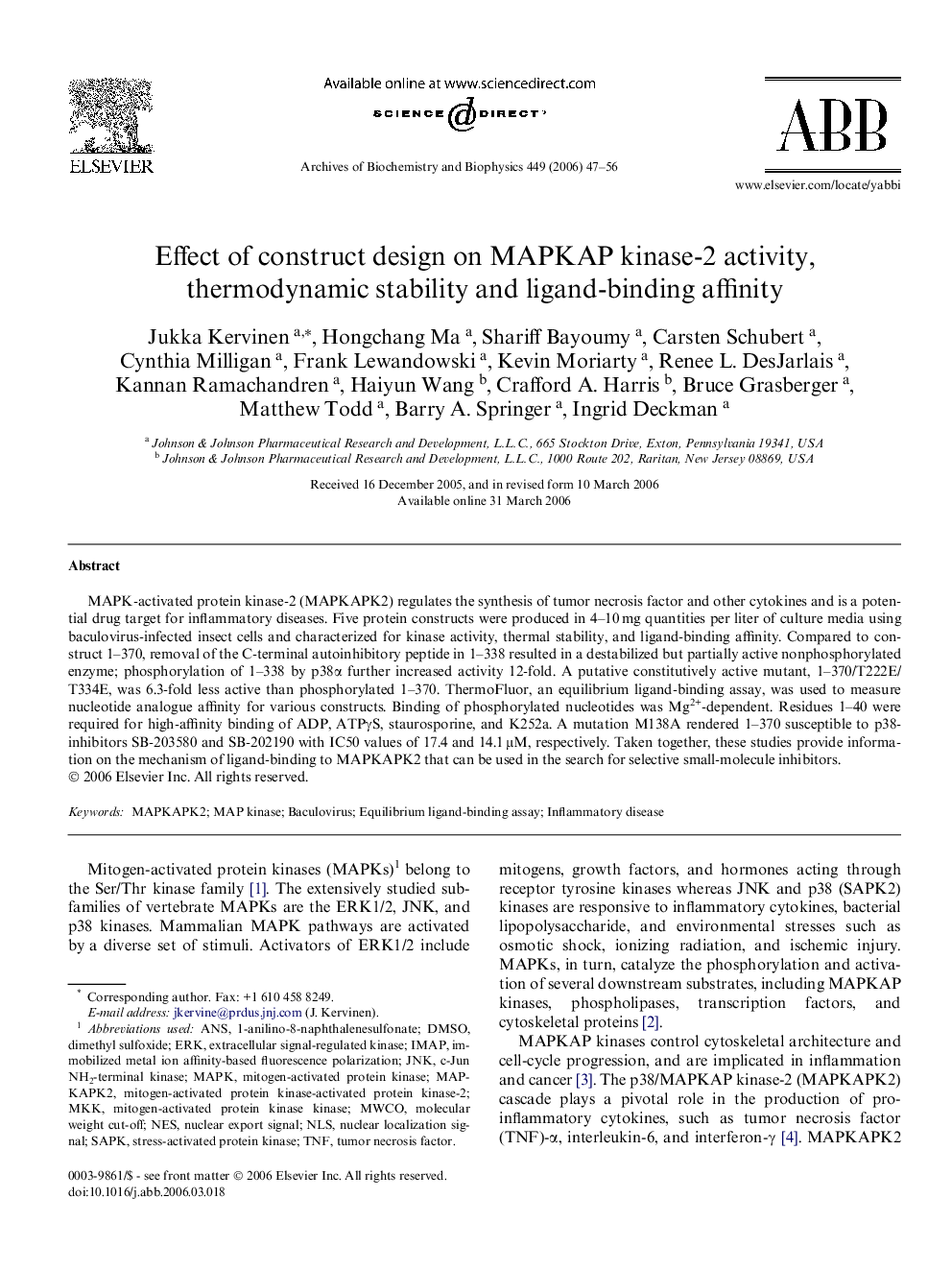| Article ID | Journal | Published Year | Pages | File Type |
|---|---|---|---|---|
| 1927532 | Archives of Biochemistry and Biophysics | 2006 | 10 Pages |
MAPK-activated protein kinase-2 (MAPKAPK2) regulates the synthesis of tumor necrosis factor and other cytokines and is a potential drug target for inflammatory diseases. Five protein constructs were produced in 4–10 mg quantities per liter of culture media using baculovirus-infected insect cells and characterized for kinase activity, thermal stability, and ligand-binding affinity. Compared to construct 1–370, removal of the C-terminal autoinhibitory peptide in 1–338 resulted in a destabilized but partially active nonphosphorylated enzyme; phosphorylation of 1–338 by p38α further increased activity 12-fold. A putative constitutively active mutant, 1–370/T222E/T334E, was 6.3-fold less active than phosphorylated 1–370. ThermoFluor, an equilibrium ligand-binding assay, was used to measure nucleotide analogue affinity for various constructs. Binding of phosphorylated nucleotides was Mg2+-dependent. Residues 1–40 were required for high-affinity binding of ADP, ATPγS, staurosporine, and K252a. A mutation M138A rendered 1–370 susceptible to p38-inhibitors SB-203580 and SB-202190 with IC50 values of 17.4 and 14.1 μM, respectively. Taken together, these studies provide information on the mechanism of ligand-binding to MAPKAPK2 that can be used in the search for selective small-molecule inhibitors.
